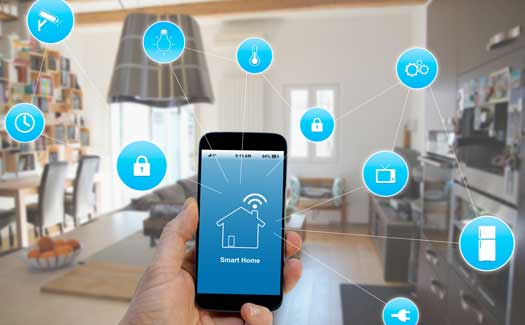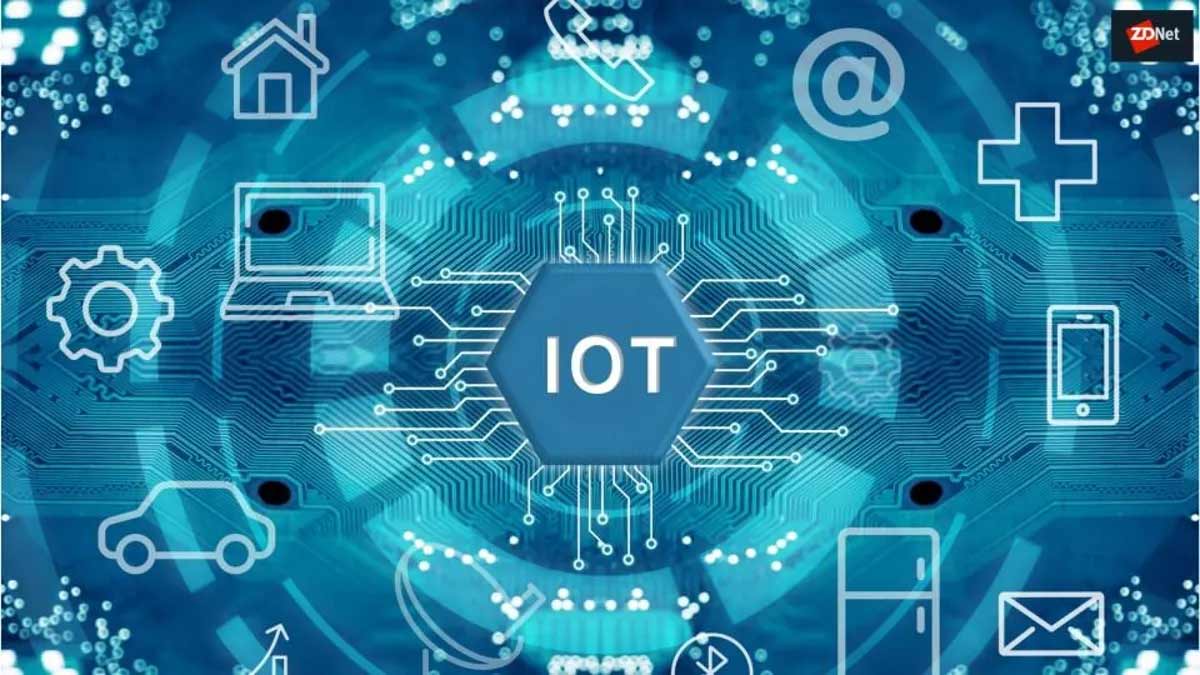Introduction: Why 2025 Is the Year Smart Homes Become Truly Life-Changing
Smart homes have been an exciting idea for years, but in 2025, they’re finally hitting their stride. Thanks to leaps in IoT (Internet of Things) and AI (Artificial Intelligence), the homes of today are smarter, more connected, and more intuitive than ever before. This isn’t just about gadgets — it’s about transforming your entire living experience.
Imagine a home that knows your schedule, adapts to your preferences, keeps you safe, saves energy, and even helps manage your health. This article explores how smart home technology is reshaping everyday life, what new innovations to expect, and how to make the most of this revolution in your own home.
Understanding the Core Technologies Behind Smart Homes
At the heart of the smart home revolution are a few key technologies working together seamlessly:
-
Internet of Things (IoT): IoT connects your appliances, lights, thermostats, cameras, and more through the internet, allowing them to communicate and be controlled remotely. The number of connected devices per household is expected to exceed 50 by the end of 2025.
-
Artificial Intelligence (AI): AI powers the brains behind smart homes — learning your habits, predicting needs, automating tasks, and providing voice-activated assistance. The AI in 2025 is more personalized, contextual, and capable than ever.
-
Edge Computing: To reduce delays and improve privacy, more data processing happens locally on devices rather than in distant cloud servers, allowing faster responses and better security.
-
5G Networks: High-speed, low-latency 5G connectivity supports vast numbers of smart devices simultaneously without performance drops.
-
Advanced Sensors and Automation Systems: Motion detectors, environmental sensors, biometric scanners, and smart locks work in concert to offer real-time monitoring and control.
Benefits of Smart Homes: More Than Just Convenience
Smart homes bring many tangible advantages that improve lifestyle, security, and sustainability:
-
Unmatched Convenience: Your home anticipates your needs. Lights, climate, entertainment, and appliances adjust automatically based on your routine and preferences.
-
Energy Efficiency and Cost Savings: Smart thermostats, lighting, and appliances optimize energy use, lowering bills and reducing your carbon footprint.
| Smart Thermostat Model | Estimated Annual Savings (%) | Average Savings ($) |
|---|---|---|
| Nest Learning Thermostat | 15-20% | $130-$160 |
| Ecobee SmartThermostat | 20-23% | $150-$180 |
| Honeywell Home T9 | 10-15% | $90-$130 |
-
Enhanced Security: AI-enabled cameras, smart locks, and motion sensors create robust security ecosystems, alerting you instantly to unusual activity.
-
Health and Accessibility: Smart homes improve comfort and accessibility for seniors and people with disabilities via voice control and automation.

electromechanical-iot-smart-home-blog-header-525×325
The Latest Smart Home Devices and Innovations Transforming Your Living Space in 2025
The smart home landscape in 2025 is more dynamic than ever, offering devices that enhance comfort, security, and energy efficiency:
-
Smart Speakers and Voice Assistants: The evolution of voice control devices like Amazon Echo, Google Nest, and Apple HomePod means natural language understanding is now seamless. These assistants integrate with nearly every smart device to give you hands-free control of your entire home.
-
AI-Powered Security Systems: Next-gen security cameras use AI to differentiate between family members, pets, and strangers, drastically reducing false alarms. Real-time facial recognition and threat detection alert you immediately to potential dangers, while smart locks provide secure, keyless entry.
-
Energy Management Systems: Whole-home energy monitors and smart circuit breakers provide granular insights into your electricity consumption. Combined with AI, they optimize power usage, helping reduce waste and cost.
-
Smart Appliances: Refrigerators now track inventory and suggest recipes based on available ingredients. Smart ovens adjust cooking time and temperature automatically, while robotic vacuum cleaners map your home for efficient cleaning schedules.
How to Ensure Privacy and Security in Your Smart Home Ecosystem
Privacy concerns are a top consideration when adopting smart home technologies. Here’s how to keep your smart home secure:
-
Data Encryption and Privacy Policies: Always choose devices from reputable manufacturers that use end-to-end encryption and have transparent privacy policies. Avoid brands with histories of data breaches.
-
Network Security: Set up a dedicated network for your smart devices separate from your primary Wi-Fi. Use strong, unique passwords and enable WPA3 encryption on your router.
-
Regular Firmware Updates: Manufacturers regularly release updates to patch security vulnerabilities. Ensure your devices are always updated to the latest firmware versions.
-
Limit Device Permissions: Review and restrict permissions on your devices. Disable unnecessary data sharing features and voice recording when not in use.

WhatIstheInternetofThings
Integrating Smart Devices for a Seamless Home Experience
Creating a cohesive smart home means ensuring devices work harmoniously together:
-
Choose Compatible Platforms: Select devices compatible with popular ecosystems like Google Home, Apple HomeKit, or Amazon Alexa for unified control.
-
Use Automation Routines: Set up routines where multiple devices act together—for example, lights dimming, music playing, and thermostat adjusting when you say “Good night.”
-
Centralized Control Apps: Use control hubs or apps that consolidate all devices into one interface, making management simpler.
| Smart Home Ecosystem | Compatible Devices | Control App Features |
|---|---|---|
| Google Home | Wide variety | Voice commands, routines, device groups |
| Apple HomeKit | Apple-certified | Privacy focus, automation, remote access |
| Amazon Alexa | Extensive | Skills, voice control, multi-device sync |
Future Trends in Smart Homes: What to Expect Beyond 2025
The evolution of smart homes is just beginning. Here are some cutting-edge trends set to redefine how we live:
-
AI-Driven Predictive Maintenance: Smart devices will soon predict failures before they happen, scheduling repairs automatically to save you time and money.
-
Augmented Reality (AR) Integration: AR interfaces will allow you to control and visualize smart home systems through wearable devices and smart glasses.
-
Sustainability Focus: More smart homes will integrate renewable energy sources like solar panels with smart energy management for self-sufficient living.
-
Health Monitoring: Advanced sensors embedded in everyday objects will track vital signs and detect health anomalies, alerting caregivers or doctors.
Advanced Troubleshooting and Maintenance Tips for Smart Homes
Keeping your smart home running smoothly requires some proactive care and troubleshooting know-how:
-
Regular Device Reboots: Just like computers, smart devices benefit from periodic reboots to clear memory and refresh connections.
-
Firmware and Software Updates: Always install updates promptly to patch security holes and add new features. Set devices to auto-update where possible.
-
Network Health Checks: Monitor your Wi-Fi network’s speed and stability. Use mesh routers or Wi-Fi extenders to eliminate dead zones.
-
Reset and Re-pair Devices: If a device is unresponsive, try a factory reset and reconnect it to your smart home ecosystem.
-
Battery Management: For battery-powered devices like sensors or locks, replace batteries regularly and use rechargeable ones if supported.
-
Consult Manufacturer Support: When issues persist, manufacturer customer service or online forums can provide specific guidance.
A Buyer’s Guide for Smart Home Devices in 2025
Navigating the booming smart home market can be overwhelming. Here’s how to pick the best devices:
-
Assess Your Needs: Identify what problems you want to solve—security, energy efficiency, comfort, or health monitoring.
-
Check Compatibility: Choose devices that work seamlessly with your existing ecosystem (Google, Apple, Amazon).
-
Prioritize Security Features: Look for devices with encryption, two-factor authentication, and regular security updates.
-
Consider Ease of Use: Intuitive apps, voice control options, and reliable customer support matter.
-
Read Reviews and Compare Prices: Trusted tech sites and user feedback offer insights into device reliability and value.
-
Plan Your Budget: Smart homes can start small and scale up. Start with essential devices and expand over time.
Case Studies of Real Smart Home Setups
Here are examples of how different users have transformed their homes:
-
The Busy Professional: Uses voice-activated assistants for multitasking, smart locks for keyless entry, and AI thermostats to optimize energy use during work hours.
-
The Family Home: Integrates smart security cameras, doorbell cameras, and automated lighting to ensure safety and convenience for all ages.
-
The Senior-Friendly Home: Employs fall detection sensors, voice-controlled lights and appliances, and health monitoring devices to promote independence.
-
The Eco-Conscious Household: Combines solar panels with smart energy storage and smart plugs to maximize renewable energy usage and minimize waste.

IoT Developer Roadmap – 2025
Integration with Renewable Energy and Sustainability
Smart homes and sustainability go hand in hand:
-
Solar Energy Management: Smart inverters and energy monitors optimize solar panel output, storing excess energy and reducing grid dependency.
-
Smart Thermostats and HVAC Controls: These systems learn your schedule and adjust heating/cooling to reduce waste.
-
Water Conservation: Smart irrigation systems use weather data to water gardens efficiently, saving thousands of gallons annually.
-
Energy-Efficient Lighting: LED smart bulbs controlled by automation routines significantly cut energy use.
| Sustainability Feature | Benefits | Estimated Annual Savings |
|---|---|---|
| Solar Integration with Storage | Reduced electricity bills and grid reliance | $300–$600 |
| Smart Irrigation Systems | Water savings and healthier plants | 20-30% reduction in water use |
| Smart Thermostats | Lower heating/cooling costs | $150–$200 |
By integrating renewable energy and smart technologies, you create a future-proof home that saves money and protects the planet.
Frequently Asked Questions (FAQ)
Q1: Why should I invest in smart home technology in 2025?
A1: Smart home tech in 2025 offers unmatched convenience, energy savings, enhanced security, and health benefits. It’s also becoming more affordable and easier to use.
Q2: What are the key factors to consider before setting up a smart home?
A2: Assess your specific needs, ensure device compatibility, prioritize security, and plan your budget. Starting small and expanding gradually is the best approach.
Q3: How do smart homes save energy and reduce utility bills?
A3: Smart thermostats, lighting, and appliances optimize their usage based on your habits and environmental conditions, minimizing wasteful consumption.
Q4: What are common security risks with smart homes and how to prevent them?
A4: Risks include unauthorized access, data breaches, and device hacking. Prevent by using strong passwords, network segmentation, firmware updates, and buying from trusted brands.
Q5: How does AI improve the smart home experience?
A5: AI learns your habits and preferences, automates tasks, provides personalized assistance, and improves device efficiency over time.
Q6: How to integrate multiple smart devices for a smooth experience?
A6: Use a single ecosystem (Google, Apple, Amazon), set up automation routines, and use centralized control apps for simplicity.
Q7: Where can I find the best smart home devices in 2025?
A7: Reputable electronics retailers, official brand stores, and verified online platforms like Amazon, Best Buy, or manufacturer websites.
Q8: When is the best time to upgrade my home with smart technology?
A8: As soon as you identify needs that smart tech can fulfill or when you renovate your home for maximum integration ease.
Q9: Who benefits the most from smart home technology?
A9: Everyone benefits, but especially busy professionals, families, seniors, and individuals with disabilities seeking convenience and safety.
Conclusion: Embrace the Smart Home Revolution Today
Smart homes in 2025 are no longer futuristic dreams—they’re practical, accessible, and transformative. By leveraging IoT, AI, and next-gen connectivity, you can create a living space that adapts to your lifestyle, enhances security, improves health, and reduces environmental impact. Starting small, prioritizing privacy, and choosing compatible devices will help you build a smart home that grows with your needs. The future is smart—and it’s waiting for you.
Recommended Video:
How to Build Your Ideal Smart Home in 2025 and Beyond
Step 1: Define Your Smart Home Goals
Determine what you want your smart home to achieve. Is it security, energy savings, comfort, health monitoring, or all of the above? Clear goals will guide your device choices.
Step 2: Start with a Solid Network Infrastructure
Invest in a reliable Wi-Fi setup with mesh routers or wired connections. A strong network is the backbone of any smart home, ensuring all devices communicate seamlessly.
Step 3: Choose a Central Ecosystem
Pick an ecosystem like Google Home, Apple HomeKit, or Amazon Alexa. Staying within one ecosystem ensures better device compatibility and smoother automation.
Step 4: Prioritize Security from Day One
Use strong, unique passwords, enable two-factor authentication, keep firmware updated, and consider network segmentation to protect devices from cyber threats.
Step 5: Begin with Core Devices
Start with essential devices like smart thermostats, lighting, and security cameras. Gradually add smart locks, sensors, appliances, and entertainment systems as your needs evolve.
Step 6: Plan for Scalability and Integration
Choose devices that support open standards and APIs, allowing future integration with new technologies without a complete overhaul.
Step 7: Automate Intelligently
Use routines and triggers thoughtfully to automate tasks — for example, setting lights to turn off when leaving home or scheduling temperature adjustments based on occupancy.
Step 8: Incorporate Sustainability Features
Integrate smart energy meters, solar panels, and water-saving irrigation to reduce your home’s environmental footprint.
Step 9: Educate Yourself Continuously
Stay updated on emerging trends, security best practices, and new device releases through trusted tech blogs, forums, and manufacturer updates.
Step 10: Customize for Your Lifestyle
Tailor your smart home settings and automations to fit your daily habits, family needs, and personal preferences, creating a truly personalized living environment.

IoT Architecture | Internet Of Things Architecture For Beginners
Building Your Smart Home: Final Thoughts
Constructing a smart home in 2025 is a dynamic journey—one that grows and adapts alongside technology and your lifestyle. By following these steps, you ensure your home remains secure, efficient, and a source of joy and convenience for years to come.
Emerging Innovations Shaping the Future of Smart Homes Beyond 2025
The smart home revolution is accelerating, and here are some frontier technologies to watch:
-
Quantum Computing in Smart Home AI: Future AI assistants could leverage quantum computing to process data and make decisions with unprecedented speed and accuracy.
-
5G and Beyond Connectivity: Ultra-fast, low-latency networks will enable instant communication between devices, allowing real-time monitoring and control anywhere in the world.
-
Biometric Authentication Everywhere: Beyond fingerprints and facial recognition, smart homes may incorporate heartbeat patterns, gait analysis, and even brainwave scanning for personalized access and security.
-
Nanotechnology in Smart Materials: Walls, windows, and furniture embedded with nanosensors will adapt their properties — changing transparency, temperature, or even generating energy.
-
Robotics and Automation: Advanced household robots will handle chores beyond cleaning — cooking, laundry, gardening — transforming home management entirely.
-
Emotional AI: Smart homes could detect emotional states via voice, facial expression, or physiological sensors and adjust lighting, music, or environment to improve wellbeing.
Why These Innovations Matter
These breakthroughs promise not just convenience but a qualitative leap in how we live, making homes more responsive, sustainable, and attuned to human needs.
References and Authoritative Resources for Smart Home Enthusiasts
For a deeper dive and trustworthy information, explore these leading sources:
-
Consumer Reports – Smart Home Devices Reviews:
https://www.consumerreports.org/cro/smart-home-devices.htm
Comprehensive, unbiased product reviews and ratings on the latest smart home gadgets. -
CNET Smart Home Guide:
https://www.cnet.com/home/smart-home/
Up-to-date news, buying guides, and tutorials on smart home technology trends. -
National Institute of Standards and Technology (NIST) – IoT Security:
https://www.nist.gov/programs-projects/internet-things-iot
Authoritative research and guidelines on securing smart home and IoT devices. -
Energy Star – Smart Thermostats and Energy Efficiency:
https://www.energystar.gov/products/thermostats
Official information on how smart thermostats can reduce energy consumption. -
Smart Energy International:
https://www.smart-energy.com/
Industry news and case studies on smart energy management and sustainability.
Additional Resources
-
YouTube Channels:
-
TechHive — Detailed reviews and smart home setup walkthroughs
-
Linus Tech Tips — Popular tech explanations and practical demos
-
The Hook Up — Smart home product comparisons and installation guides
-
-
Online Communities and Forums:
-
r/smarthome on Reddit — User discussions, problem-solving, and ideas
-
SmartThings Community — Official Samsung smart home user support
-
Home Assistant Forum — Open-source home automation enthusiasts
-
-
Apps for Smart Home Management:
-
Google Home — For managing Google-compatible devices
-
Apple Home — Central hub for HomeKit devices
-
Amazon Alexa — Integrates thousands of smart products with voice commands
-


